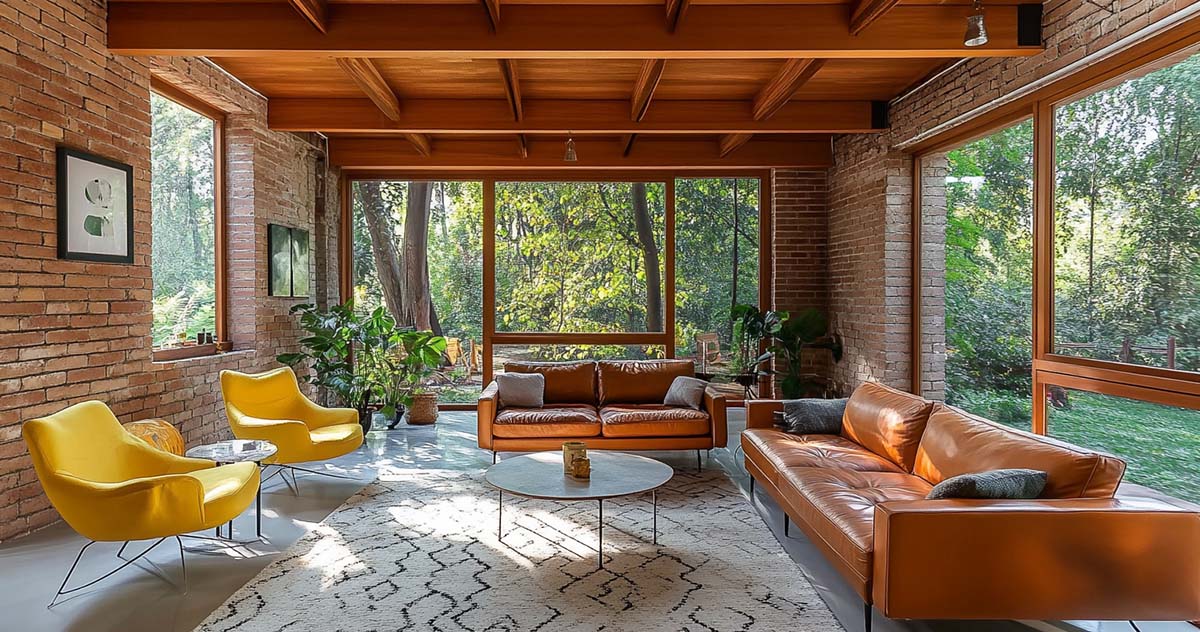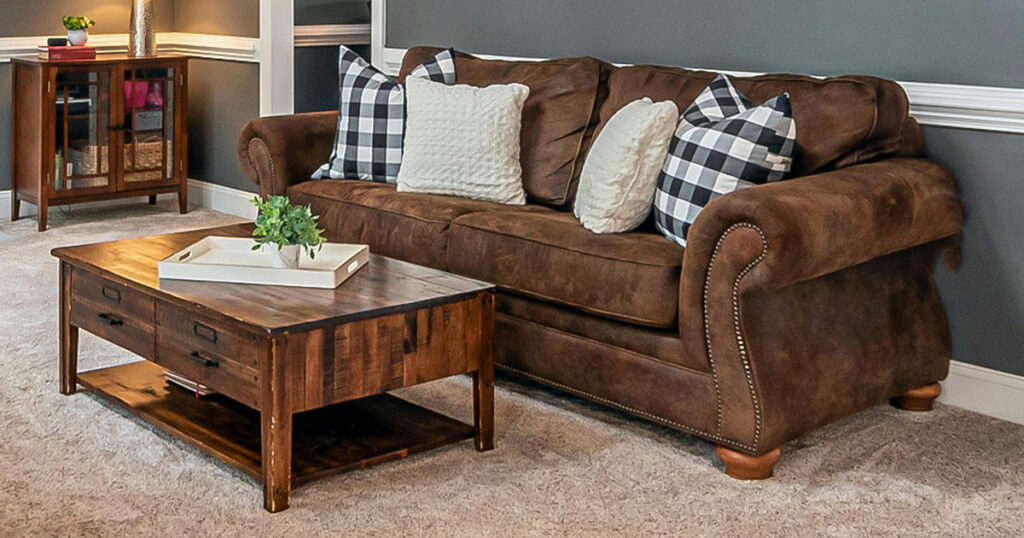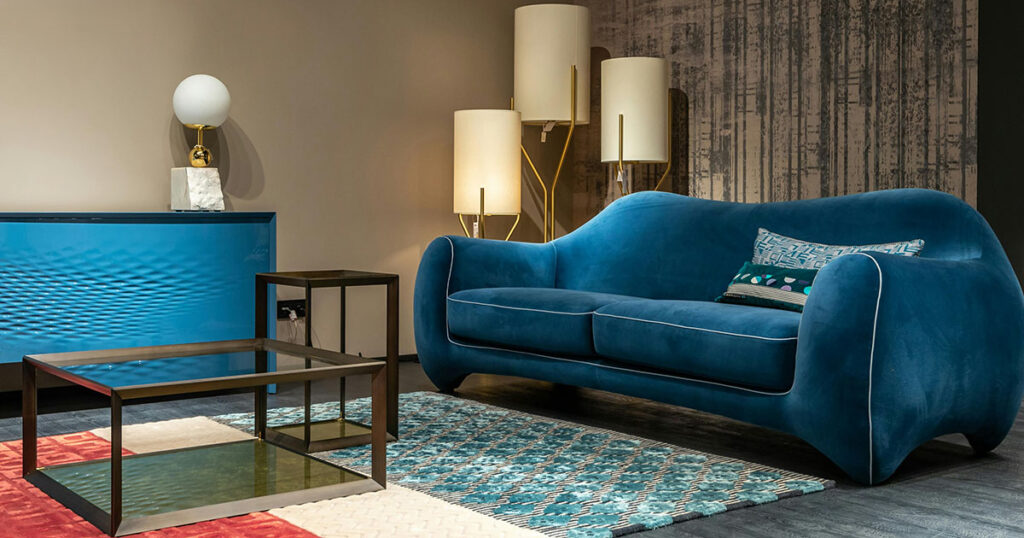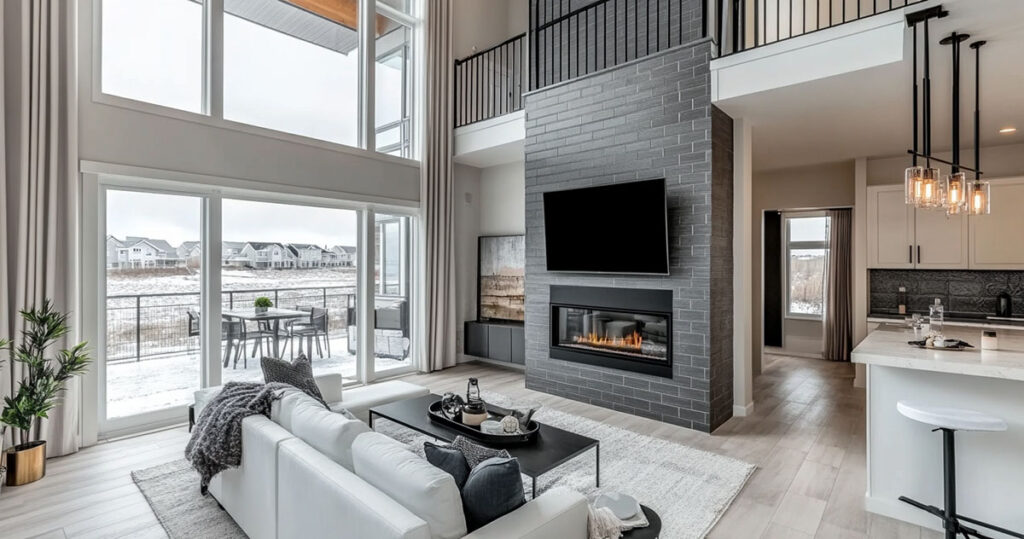Scandinavian interior design has captured hearts worldwide with its clean lines, functional approach, and cozy minimalism. At its core, this design philosophy embraces simplicity, natural materials, and a light color palette that makes spaces feel airy and welcoming.
Originating from Nordic countries (Denmark, Sweden, Norway, Finland, and Iceland), Scandinavian design flourished in the mid-20th century. It combines practicality with beauty, creating spaces that are both functional and aesthetically pleasing. The style emphasizes quality craftsmanship and durability—pieces meant to last rather than be replaced frequently.
In a genuine Scandinavian interior, every element serves a purpose while contributing to the overall harmony. A well-chosen rug is fundamental to this balance, providing warmth, defining spaces, and adding textural interest without overwhelming the room.
Role of Rugs in Scandinavian Interiors
Rugs play several crucial roles in Scandinavian spaces:
- They add warmth to rooms dominated by light colors and hard surfaces
- They help define areas within open floor plans
- They introduce texture and subtle pattern
- They provide comfort underfoot, especially important in cold climates
- They contribute acoustic benefits, reducing echo in minimalist spaces
The right rug doesn’t compete for attention but rather complements and enhances the room’s features.
It should feel like an integral part of the space rather than an afterthought.
Colors That Complement Scandinavian Aesthetics
Neutral Foundation
In true Scandinavian interiors, light neutrals dominate.
When selecting a rug, consider these classic Scandinavian color choices:
- Whites and off-whites
- Light to medium grays
- Soft beiges and taupes
- Warm oatmeal tones
These neutral shades create harmony with typical Scandinavian elements like white walls and light wood furniture.
A cream wool rug can anchor a seating area while maintaining the airy feel characteristic of Nordic design.
Subtle Accent Colors
While neutrals form the foundation, subtle color can be incorporated:
- Pale blues (reminiscent of Scandinavian skies and waters)
- Muted greens (reflecting forests and natural landscapes)
- Soft blush or dusty pink tones
- Desaturated yellows or mustards
The key is selecting colors that appear slightly faded or muted rather than vibrant or primary. These gentler tones create depth without overwhelming the calm aesthetic.
Black and White Contrast
Many Scandinavian interiors incorporate black accents for contrast. A black and white rug—perhaps with a simple geometric pattern—can be striking yet still aligned with Scandinavian principles. This high-contrast approach works particularly well in spaces with other black elements like lighting fixtures or picture frames.
Patterns for Scandinavian Spaces
Clean Geometric Designs
Geometric patterns feature prominently in Scandinavian design, prized for their orderly simplicity. Consider these options:
- Simple stripes (horizontal or vertical)
- Grid patterns
- Diamond or chevron motifs
- Triangular patterns
The most successful geometric rugs for Scandinavian spaces feature clean lines and are typically two-tone (such as gray and white) rather than multicolored.
The patterns should feel organized and intentional, never chaotic.
Nature-Inspired Motifs
Scandinavian design has always maintained a strong connection to nature. Rugs that feature stylized natural elements work beautifully:
- Abstract leaf patterns
- Simplified forest or mountain silhouettes
- Subtle wave-like designs
- Snowflake or star motifs
These natural patterns appear in a minimalist, abstracted form rather than as literal representations. The forms are clean and stylized, maintaining the ordered simplicity that characterizes Scandinavian design.
Traditional Nordic Patterns
Some Scandinavian rugs incorporate heritage patterns that connect to the region’s craft traditions:
- Swedish kilim-style patterns
- Traditional rya rug designs
- Folk-inspired motifs with stars or flowers
These traditional patterns work best when rendered in muted, contemporary colors.
A vintage Swedish flat-weave rug with geometric folk patterns in washed-out blues and grays can add character while still feeling appropriate to the style.
Textures and Materials for Scandinavian Rugs
Natural Fiber Options
Scandinavian design celebrates natural materials, and rug choices typically reflect this preference:
Wool
Wool is perhaps the quintessential Scandinavian rug material. It offers exceptional durability, natural stain resistance, and a wonderful feel underfoot. Wool rugs are available in various weaves and pile heights, from flat-woven kilims to plush high-pile options.
The natural warmth and slight variation in wool fibers add subtle visual interest even in solid-colored rugs. Additionally, wool’s temperature-regulating properties make it practical in Scandinavian climates, where it provides warmth in winter while remaining comfortable in summer.
Jute and Sisal
These plant fibers bring earthy texture to Scandinavian spaces. Their natural golden-tan color complements light wood tones common in Nordic interiors. Jute or sisal rugs work particularly well in dining areas or as a base layer beneath smaller accent rugs.
While these fibers aren’t as soft as wool, their textural quality adds dimension and visual warmth. They’re also sustainable choices, aligning with the Scandinavian value of environmental consciousness.
Cotton
Cotton rugs, particularly flat-woven varieties like rag rugs, have a long history in Scandinavian homes.
They’re typically lightweight, washable, and available in simple stripe patterns that complement Scandinavian interiors.
Swedish rag rugs (trasmatta) are a traditional example that brings casual charm to kitchens or children’s rooms. Their practicality and unpretentious design make them perfectly suited to the Scandinavian ethos.
Synthetic Options for Practical Spaces
While natural materials are ideal, synthetic fibers offer practical alternatives for high-traffic or spill-prone areas:
Polypropylene
Polypropylene rugs have become popular for their exceptional durability and stain resistance. They can mimic the look of natural fiber rugs while offering superior ease of cleaning.
For an entryway or dining room in Scandinavian style, a polypropylene rug with a sisal-like texture or simple geometric pattern can provide practicality without compromising aesthetics.
Polyester
Polyester rugs can offer incredible softness, making them suitable for bedrooms or living areas where comfort is paramount.
They take dye well, so they’re available in the full range of Scandinavian-friendly colors.
Some polyester rugs are even made from recycled materials, adding an eco-friendly dimension that aligns with Nordic values.
The Importance of Texture
Texture is fundamental to creating warmth in minimalist Scandinavian interiors. Consider these textural elements:
- High-low pile creates subtle pattern through texture alone
- Shaggy or flokati-style rugs add dramatic textural contrast
- Hand-woven rugs with visible weave add artisanal character
- Looped pile creates interesting surface dimension
Even in solid-colored rugs, textural interest prevents the space from feeling flat or sterile.
A cream rug with varied pile heights, for example, adds sophistication and depth without introducing pattern.
Rug Sizing and Placement for Scandinavian Rooms
Living Room Rug Guidelines
In Scandinavian living rooms, rugs should be generously sized:
- Ensure all furniture legs (at least the front ones) rest on the rug
- Leave approximately 12-18 inches of floor visible around the rug’s perimeter
- Choose a rug at least as wide as your sofa, ideally extending 6-8 inches beyond each side
A properly sized living room rug creates a defined conversation area while maintaining the open, airy feel essential to Scandinavian spaces.
Dining Room Considerations
For dining areas, functionality is key:
- Select a rug large enough for chairs to remain on it even when pulled out
- Allow approximately 24-36 inches of rug extending beyond the table edge on all sides
- Choose low-pile or flat-woven styles that accommodate chair movement
A dining room rug should match the table’s shape (rectangular table, rectangular rug) for visual harmony.
Bedroom Rug Placement
In Scandinavian bedrooms, rugs add comfort and define the sleeping area:
- For a single large rug: position it to extend 18-24 inches beyond the sides and foot of the bed
- For twin runners: place one on each side of the bed where feet land
- Consider placing a small accent rug at the foot of the bed
The bedroom rug should provide a soft landing for bare feet while maintaining clean lines and simplicity.
Open Plan Spaces
In open-concept living areas (popular in Scandinavian homes), rugs help define functional zones:
- Use similar but distinct rugs to delineate living and dining areas
- Maintain consistent color themes across multiple rugs
- Leave adequate space between rugs rather than placing them edge to edge
This zoning technique creates visual organization without requiring walls or dividers.
Selecting Rugs for Different Settings
Residential Spaces: Prioritizing Comfort
In homes, coziness is paramount. Scandinavian residential spaces can accommodate:
- Higher pile heights for added softness
- Natural materials like wool that improve with age
- Lighter colors that might be impractical in commercial settings
- Handcrafted or vintage pieces that tell a story
The Scandinavian concept of “hygge” (coziness and comfort) should guide residential rug choices, especially in living rooms and bedrooms.
Commercial Spaces: Durability First
For Scandinavian-inspired offices, restaurants, or retail spaces, practicality must lead:
- Choose low-pile, tightly woven constructions
- Select synthetic fibers or wool-synthetic blends for high-traffic areas
- Opt for patterns or heathered colors that hide soil and wear
- Consider modular options that allow for partial replacement
Commercial rugs should maintain the Scandinavian aesthetic while withstanding intensive use.
Customization Options
Custom Sizing
Standard rug sizes don’t always fit Scandinavian spaces perfectly. Consider these customization options:
- Many retailers offer cut-to-size natural fiber rugs
- Custom wool rugs can be ordered to specific dimensions
- Carpet binding services can create custom-sized rugs from broadloom material
A precisely sized rug creates a more refined, intentional look that aligns with Scandinavian precision.
Bespoke Designs
For truly unique spaces, consider custom-designed rugs:
- Work with artisans to create a specific pattern in your chosen colors
- Commission a rug that incorporates elements meaningful to you
- Customize traditional Scandinavian designs for contemporary spaces
While more expensive, a bespoke rug can become the foundation of your entire design scheme.
Decision Framework
When selecting your Scandinavian rug, consider these key factors:
- Room function: What activities will take place on this rug?
- Existing colors: What neutral base and accent colors already exist in your space?
- Maintenance reality: How much time can you realistically devote to rug care?
- Budget considerations: What is your investment range for this piece?
Start with function and gradually narrow your options based on aesthetics.
Remember that in Scandinavian design, practicality and beauty should always work together.
Conclusion
The perfect rug for your Scandinavian interior balances aesthetics with function.
It should bring warmth and texture while maintaining the clean, airy qualities that make Nordic design so appealing.
Whether you choose a simple wool flatweave, a textured natural fiber piece, or a subtle geometric pattern, your rug should contribute to that uniquely Scandinavian feeling of being both minimal and deeply comfortable.




